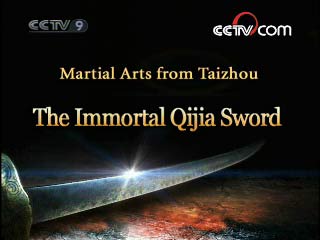------Program code: DO-080728-00718 (what's this?)
Source: CCTV.com
07-28-2008 08:21
In the West, the age of a weapon can often be determined by the shape of its blade. In ancient Rome, the length of a dagger was usually less than 60 cm. It was double edged, and easy to handle. In the films Gladiator and Spartacus, slaves can be seen fighting with such daggers.
 |
In Europe, up until the 15th century, swords trended to be broad and heavy. This meant they were able to parry attacks. But the thin, sharp edges also made them effective at cutting and stabbing. The variations of thickness also improved the balance of the blade, allowing the swordsman to control it better.
 |
Swords with thin blades became popular during the 16th and 17th Centuries. This kind of sword was light and slender, and usually sharp on the leading edge. It was used for stabbing during duels. Swordsmen using these blades can be seen in such films as Zorro.
However, the range of European swords was quite limited, developing from the simple dagger of ancient Greece, to the broadsword of the Middle Ages and the curved broad-edged saber of the 17th Century. And then, with the development of the musket during the 17th Century, the so-called cold weapons gradually faded from use.
But the glamour of cold weapons has never been lost. The sword in particular has come to symbolize the era in which it was used. As such, it continues to have great historical and artistic appeal. With sword in hand, heroes fought beasts and their enemies. The long history of the sword has given rise to numerous legends.
The Qijia sword is typical of the cold weapons used in a certain era. It is also a symbol of the Chinese people’s resistance to foreign invasion.
The first sword in China made from iron is believed to be the ring-pommel sword of Eastern Han. At the time of the Han Dynasty, around 2,000 years ago, metal-working thrived. The emergence of the long, straight, ring-pommel sword enhanced the role of the cavalry in battle. Chinese swords would eventually make their way to Japan, where improvements were made to improve their effectiveness in battle.
The skills of metal-working in China matured during the Song and Yuan Dynasties, from the 10th to the 14th centuries. The broadsword emerged, as a typical traditional cold weapon.
The broadsword developed from the Song Dynasty “hand sword”. With its wide and heavy upper part, it was good for cutting.
The Damascus sword, with its high-quality steel and fine workmanship, is acclaimed as one of the best swords the world has ever known. When, at the time of the Yuan Dynasty, the Mongol army reached Arabia, they captured many skilled sword-smiths. The techniques of smelting Damascus steel were thus brought to China.
However, the traditional Chinese broadsword would soon meet an unprecedented challenge. Out of the need to combat powerful invaders, the Qijia sword was born.
